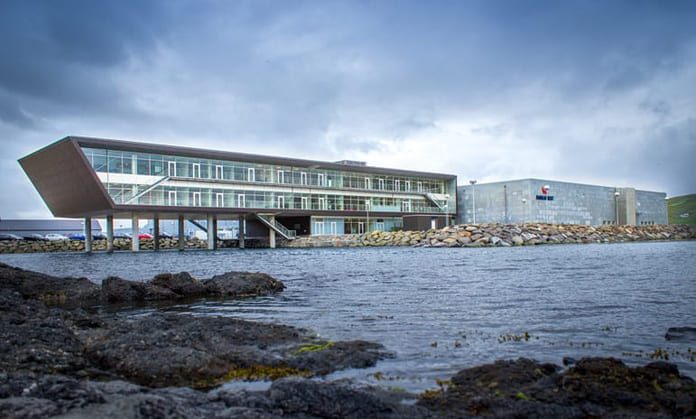In connection with the company’s capital markets day presentation, Bakkafrost has announced an investment requirement of DKK 6.2 billion (€710 million). This is aimed at increasing the company’s production by 40 per cent – to 150,000 tonnes in 2026, with the potential for 180,000 tonnes.
It will place Bakkafrost in the same division as Lerøy, Salmar and Cermaq, in the group behind the reigning market leader Mowi’s 450,000 tonnes.
After the material in connection with the capital market day on Tuesday was published, several analysts have stated that the investment level is higher than required to achieve the same growth. During the presentation on Tuesday, CFO Høgni Dahl Jakobsen says that the investment program has also set aside “significant funds” for a potential offshore investment.
Potential
“We have not included volumes from new investments in offshore or other new technology, but we have talked about the potential for offshore in the Faroe Islands. We have followed developments in Norway and elsewhere closely and have worked with our own offshore design, but unlike Norway we do not have subsidized trials available for new technologies which means that we bear the entire risk of such a type of investment ourselves, which means that we must be very safe before we start offshore,” he said to TDN Finans.

The CFO continued that Bakkafrost applied for an offshore license in November, but that this has not yet been received. However, Bakkafrost has set aside a “significant amount of money” for opportunities offshore or other technologies that prove to be a feasible option.
Much of the company’s volume growth is expected to take place in Scotland. Now the fish health will be better, and both smolts and slaughter weights will be greater.
Underinvested
“We knew when we bought the Scottish Salmon Company that it was an underinvested company. We now have a plan where we not only want to improve the margin, but also have sustainable growth in the years to come,” said Dahl Jakobsen.
Operations in the Faroe Islands and Scotland are at opposite ends of the cost curve, where the margin in the Faroe Islands was NOK 16.65 per kilo in 2020, compared with NOK -0.99 per kilo in Scotland.
“Although price achievement in Scotland is better than in Norway on average, it was still weaker than price achievement in the Faroe Islands. But the biggest challenge is not the price, but the farming cost. The cost was around 50 per cent higher in Scotland than in the Faroe Islands,” he said to TDN Finans.


